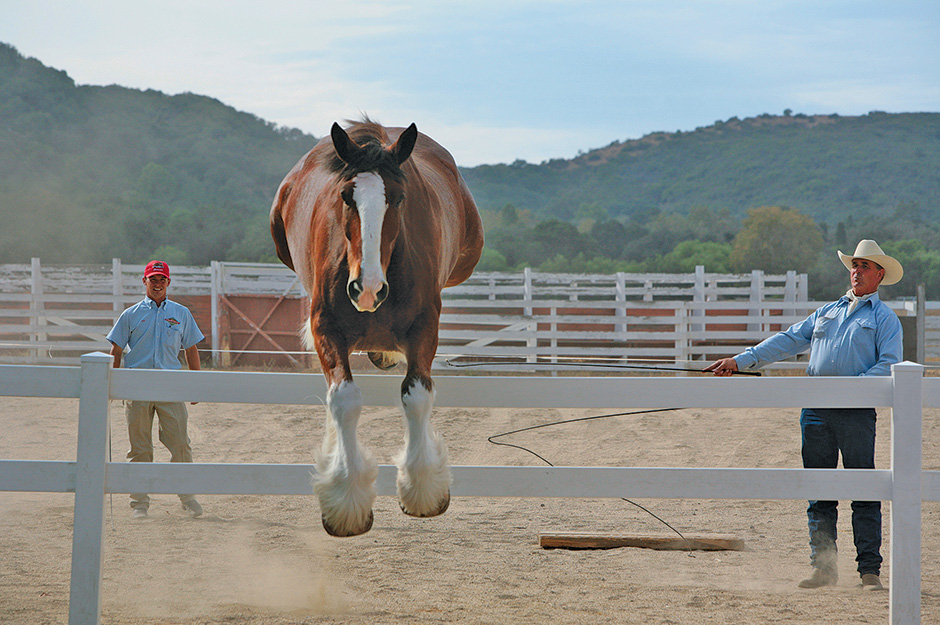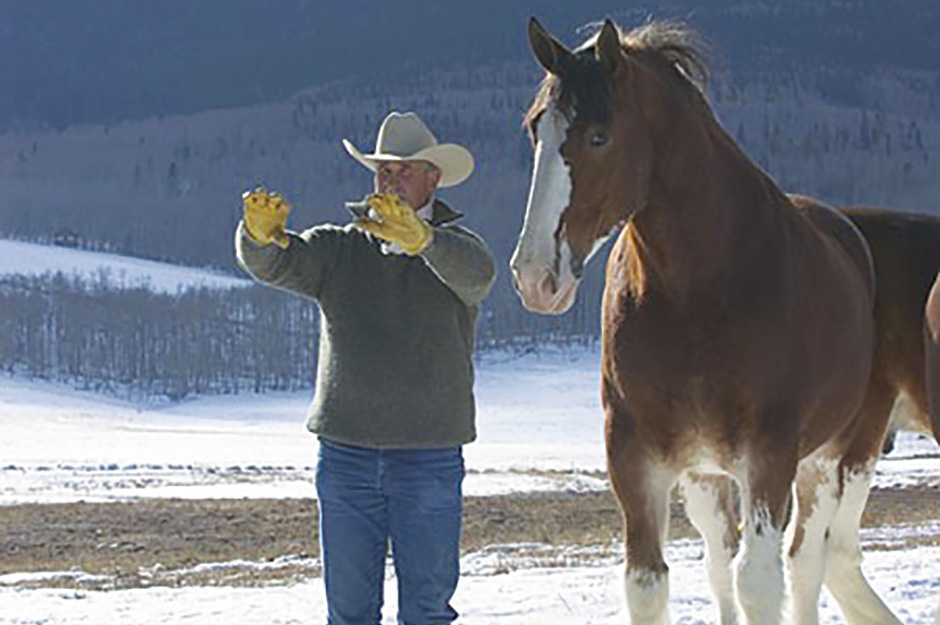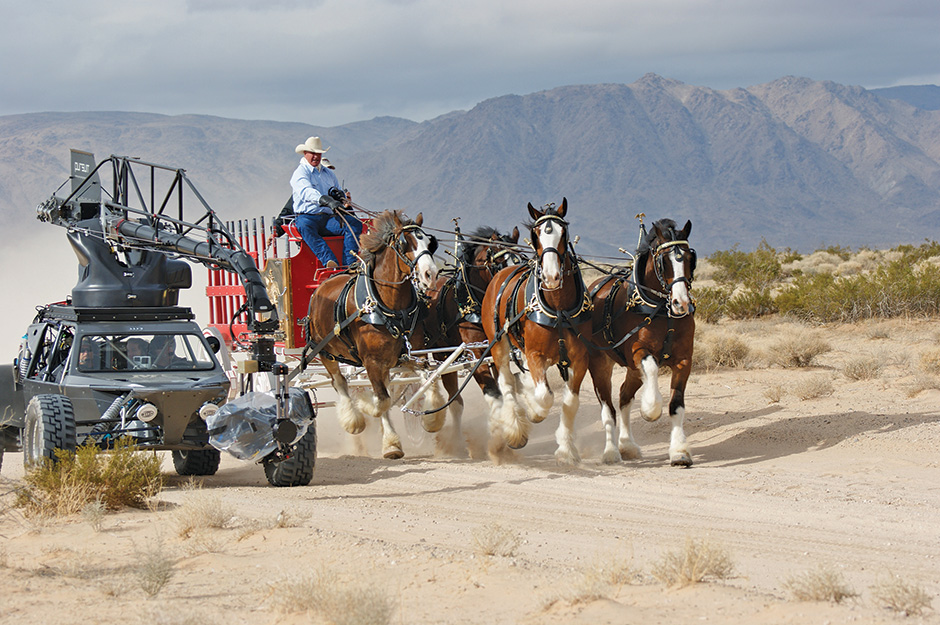Meet trainer Robin Wiltshire, the man who makes Budweiser’s Clydesdales the highlight of Superbowl parties.
Published Summer 2013
Though you might not recognize his name, Robin Wiltshire’s work is famous. In fact, it’s viewed by audiences of millions each year. For the past 15 years, Wiltshire, a charming Australian-turned-Wyoming-cowboy, has trained the iconic Budweiser Clydesdales for the Super Bowl commercials that are nearly as anticipated and talked about as the game itself.
The new Netflix documentary, My Heroes Were Cowboys is a short film about his life and work that has been released to much acclaim in 2021.
Growing up in Australia, riding and driving the horses on his father’s farm, Robin Wiltshire had never seen a western saddle. His family used Clydesdales to plow the fields and rake the hay, and he learned to work with them and to appreciate the kindness and intelligence of the draft horses. But he had always loved the American West and wanted to experience its beauty for himself. These days, on his Turtle Ranch in Wyoming, he rides all the time: “It’s the only way, when you’re on 3,000 acres, to get around. It’s too long to walk, and too steep for four-wheelers.”
When he arrived in the U.S., he was hired to train horses to perform simple tasks such as rearing or lying down. He progressed from there until in July of 1995, when he was asked by a production company, “Can horses be trained to play football?”

What resulted was a scene that amazed and charmed viewers, in which two entire “teams” of Clydesdales lined up to begin a full-on American football game, including blocks, passes, and kicks. Since then, the commercials he has worked on have ranged from the very funny, all-horse snowball fight to an emotional and moving September 11th tribute.
Little Prep Time
From the time Wiltshire receives the ideas from the production company for a commercial to the time it is filmed is often less than a month. This short period is spent wherever the shoot will be, teaching the horses and their co-stars their tricks, while acclimatizing the animals to all sorts of foreign experiences and places.
“We will often have several animals learn the same trick,” Wiltshire says. “You want to avoid putting too much pressure on the animals, and so we’ll have two or three back-ups to learn the same things, so they can relax.”
Once training has begun, the amount of people the animals are exposed to is as limited as possible, and Robin insists on doing the morning and evening feedings himself. “It’s an important time, and I want to make sure they tune in to me and my voice,” he explains. Training is done with lots of repetition and pats, plus some candy and grain. “But you can’t treat them all the time, or you’ll have one very fat Clydesdale. They love to eat,” he laughs. As training progresses, prompts and praise from Robin are all that is needed to encourage their amazing performances.
In addition to the Budweiser Clydesdales, Wiltshire’s list of credits include Wells Fargo, Chevrolet, and Phillip Morris commercials and the recent Academy Award nominee, Django Unchained, which featured horses from Wiltshire’s own Turtle Ranch.
It’s Real
Because these scenes include little to no computer animation, the interactions between the horse, the set, the actors, and the other animals must all be carefully prepared for, in the interest of accuracy and safety.
Animals such as sheep and dogs are introduced slowly to the giant horses, and props such as falling snow or footballs are first simulated using what is available. Lighting, cameras, props, and extras all add to the commotion for which the animals must be ready. Seemingly small details, such as the size of a bucket the horse is asked to carry or the fence it needs to look over, can mean hours of prop-building and training.
Train People Too
Many of the people who work on a commercial have no idea what a horse needs, wants, and can do. Robin laughingly remembers a director insisting a horse eat a meat treat, made for dogs. “I had to tell them, they’re not cannibals, they don’t eat those!” His matter-of-fact manner and his gentle sensitivity to the well-being of the horses and their limits seem out of place, yet invaluable, in the fast-paced world of TV.
“Half the time, the director gets in there and makes a change that can put everything you’ve done upside-down,” he says, “You’ll have trained the horse to scratch his left ear, and suddenly, when the director sees the light in the barn, he’ll turn him around and he’ll need to use his right ear. People say, ‘Why not train him to use both?’ It’s because you don’t want to give him too much. There’s so little time to prepare, you don’t want to give him too many directions.

“The Clydesdales are smart, kind, and intelligent. And there is nothing better to look at than one of these horses in a freshly bedded stall. But you know you’ve had a long day when they lay down in there snoring. Especially the foals, it’s a lot for those little guys, their first time out in the big world.”

